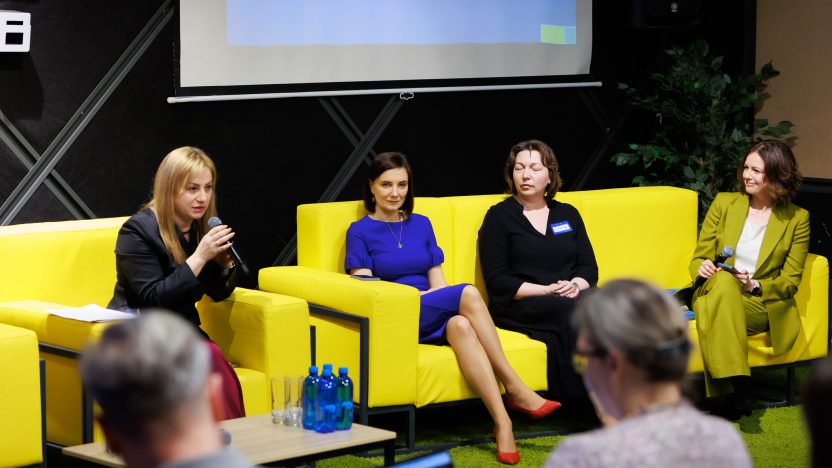Two years into Russia’s full-scale war, Ukrainian society is held together by the invisible threads of human connection. But is that enough? How do we turn those threads into real social cohesion, inclusive communities, and a new social contract? These were the questions tackled during the discussion “Social Cohesion, Inclusion, Opportunity Development, Social Infrastructure, Education and Innovation, and the Preservation of Cultural Heritage as Foundations for Ukraine’s Resilience and Recovery” hosted by the International Renaissance Foundation at the Vision of Resilience 2.0 conference.

The discussion explored the role of culture, education, veteran and IDP policies, women’s participation in recovery, and, more broadly, how to build new forms of unity in a country moving through deep trauma.
From “Soft” Recovery to New Models of Coexistence
Olena Masalitina from EdCamp Ukraine offered a metaphor: “Soft recovery is like water. It quietly fills the space — but carves out lasting paths.” This recovery isn’t about quick fixes; it’s about long-term changes in culture and mindset. In her view, education is both the root of many problems and the field of greatest potential.
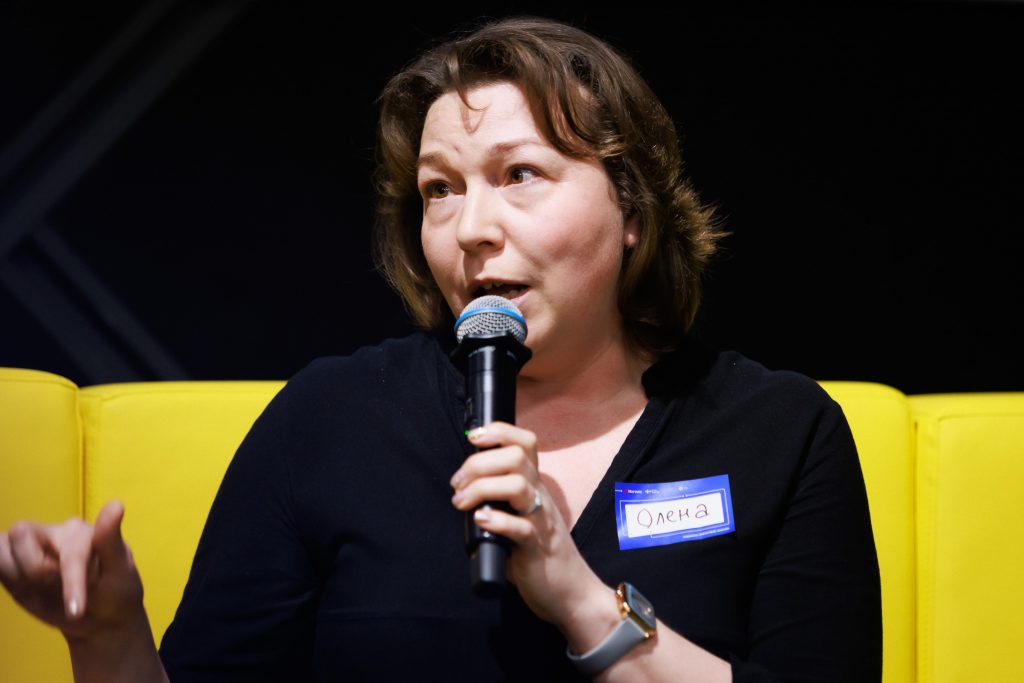
“We often define resilience as the ability to endure tough conditions. But we can’t just keep enduring — that’s not sustainable. Resilience is the ability to regain balance. It’s a skill we can learn,” Masalitina explained. She called for more realistic expectations of teachers and students, who are carrying an enormous emotional burden. Safety, she argued, must be understood holistically. There’s no need to pit “hard” and “soft” resilience against each other — what’s needed is a comprehensive and context-sensitive approach to every decision.
Who’s Included — and Who’s Left Out?
One of the central themes of the discussion was inclusion. Yana Liubymova, head of the IDP Council at the Luhansk Regional Administration, emphasized that internally displaced people (IDPs) must not just be included — they need to become change-makers themselves.
“Even if a just peace comes, displacement won’t go away. It needs to be normalized,” she said. IDPs should not be seen merely as recipients of aid but as key players in rebuilding Ukraine. For this to happen, she stressed the importance of a shared social code — a new language of understanding between people from different regions and backgrounds.
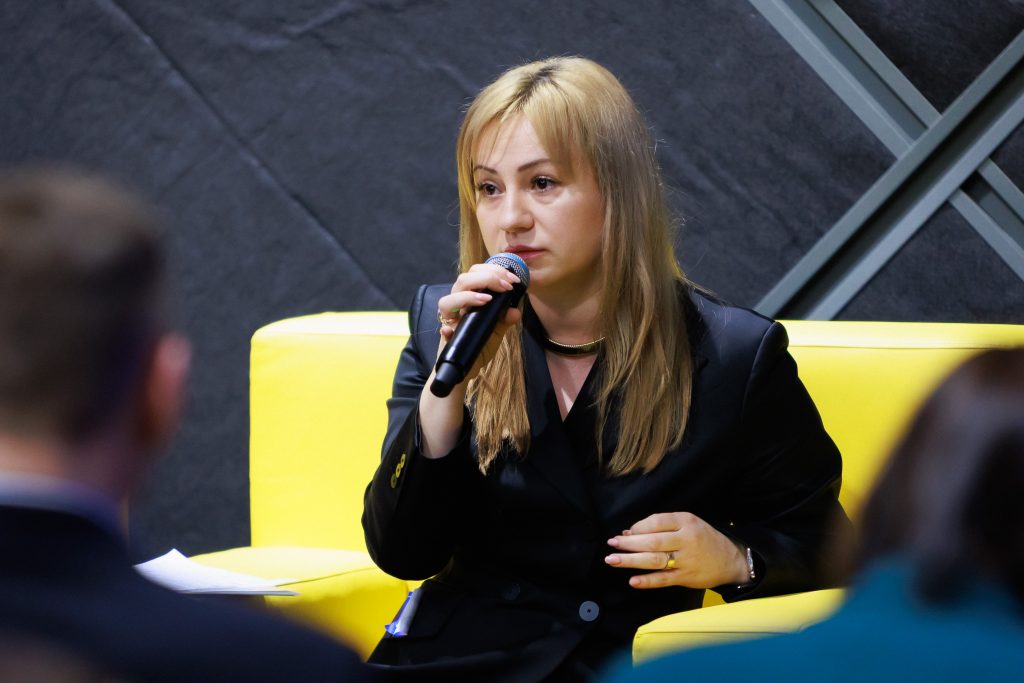
A similar idea came from Oksana Koliada of the NGO Space of Opportunities. She argued that communities must begin to see veterans and IDPs as valuable resources — economic ones included. “How do we connect the needs of people with combat experience to the economic needs of the community?” she asked. At the same time, Koliada noted, civil society organizations could step in to deliver services — but only if there are clear standards in place. Right now, coordination is lacking, and different levels of government often work in silos.
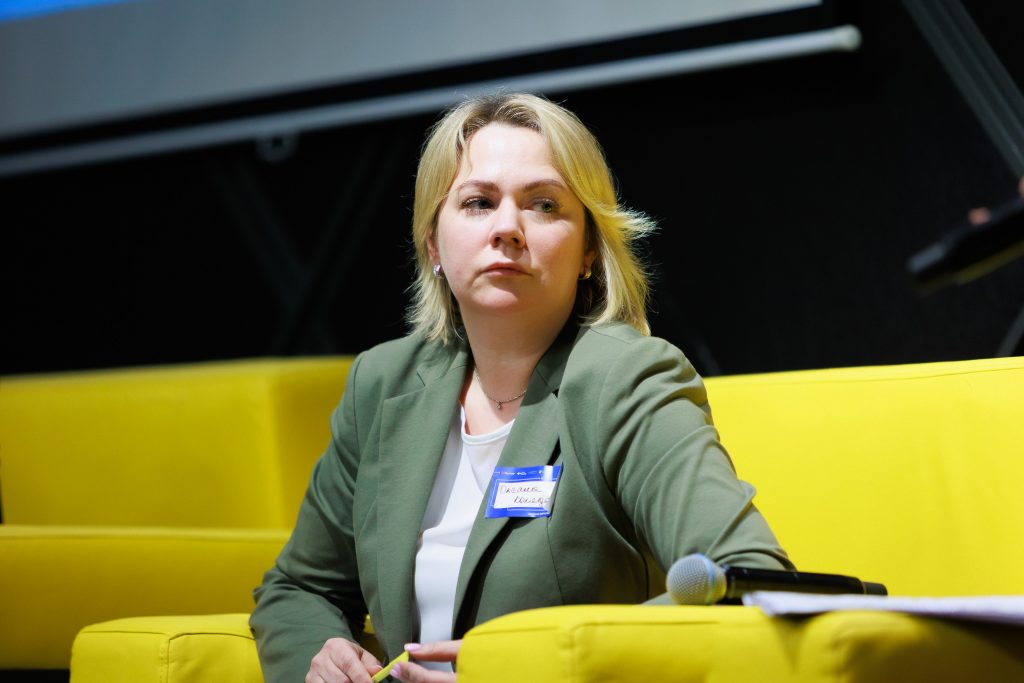
A New Social Contract: Who Fights, Who Works?
Liubov Halan, co-founder and executive director of the human rights center Princyp, raised the question of Ukraine’s evolving social contract. The war won’t end “after victory,” and the recovery phase could become a pause before the next wave of conflict. “We still face systemic challenges in understanding veterans’ issues. The state needs to start analyzing big data,” she noted.
She also proposed opening a conversation around new models for military service: basic training for civilians, alternative systems of rotation. At the same time, the labor market must be preserved. “Who fights, and who works?” — this is not a question the state should answer alone.
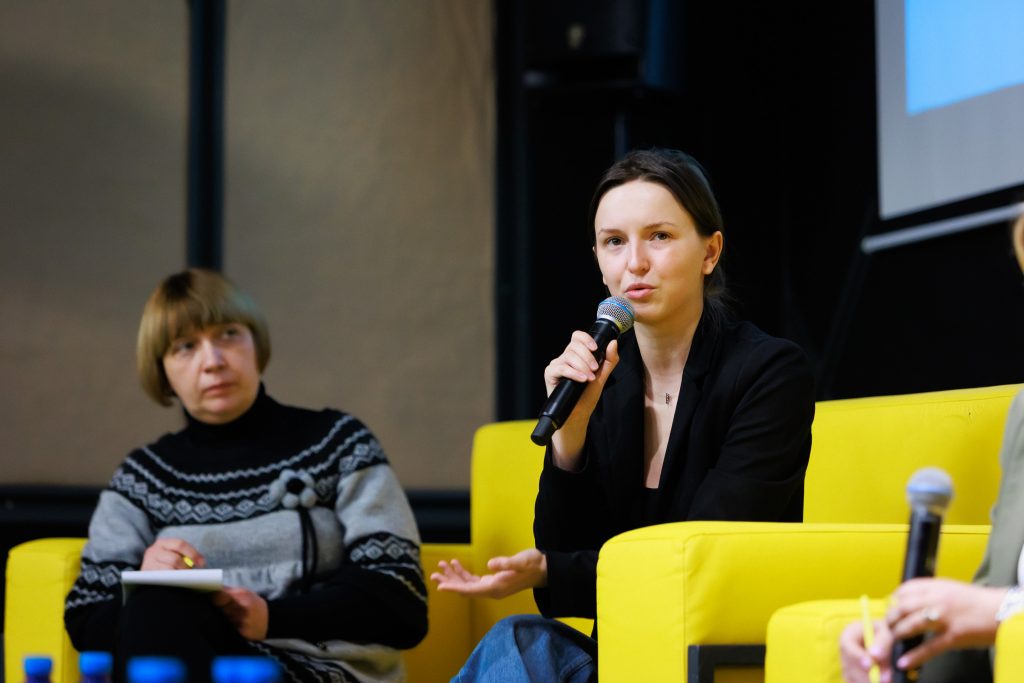
Community vs. Fragmentation
Olha Dukhnich from the Frontier Institute warned of growing fragmentation — the risk of society splintering into isolated groups. “When your enemy becomes the draft office, not Russia — that’s an atomized world,” she said. Yes, Ukrainians are showing incredible solidarity and volunteerism, but real collective action is still lacking. Many don’t realize how their own success depends on the contributions of others.
She also highlighted the growing gap between those who stayed in Ukraine and those who fled abroad — a divide that could become one of the most serious post-war challenges. Ukraine needs tools for reintegration to help people return and reconnect.
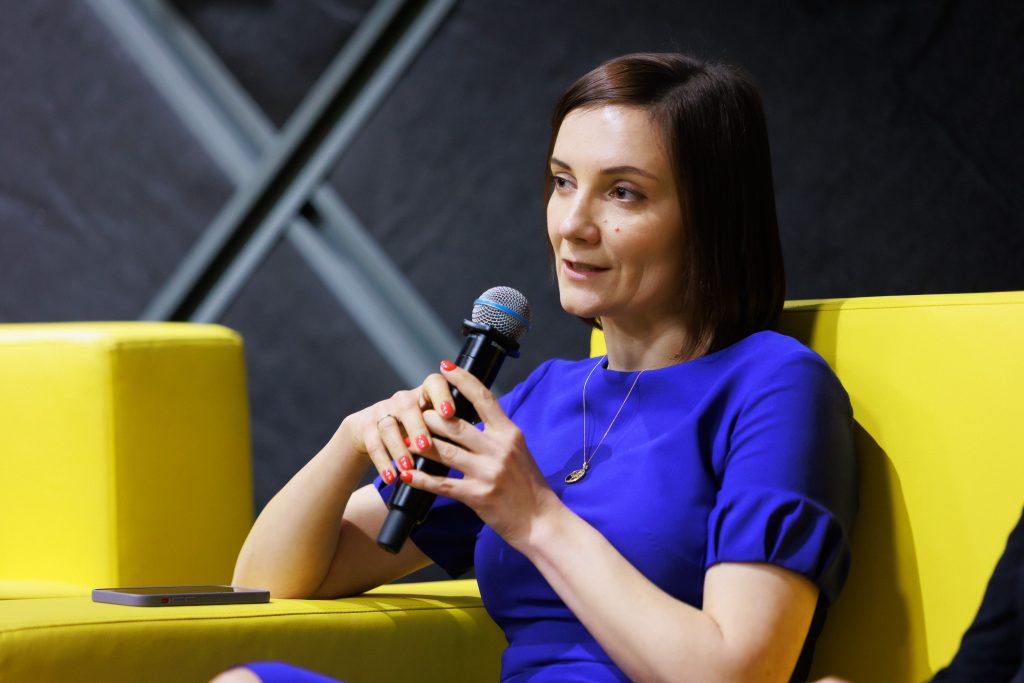
Cultural Heritage: Not a Burden, but a Resource
Olha Sahaidak of the Culture Action Coalition brought up a topic often overlooked in recovery planning: cultural heritage. “We are losing cultural heritage every single day. It won’t save itself. This is not about words — it’s about action,” she said. More than 2,000 cultural sites have already been lost.
Sahaidak referred to heritage as “a suitcase without a handle” — hard to carry, expensive to maintain. But it shapes identity, builds societal values, and can become a powerful magnet for Ukrainians abroad to return. It’s also a kind of “glue” for communities.
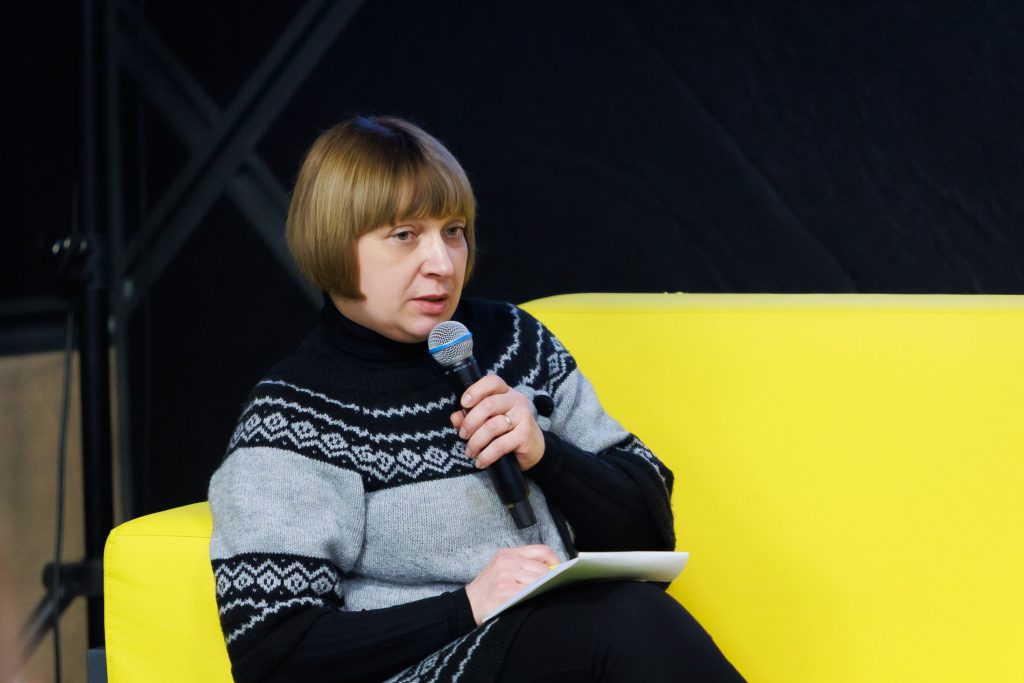
The discussion made one thing clear: rebuilding Ukraine is not just about bricks and concrete. It’s about trust, connection, participation, education, and culture — the invisible infrastructure that determines what the country will be like 10, 20, or even 50 years from now.

